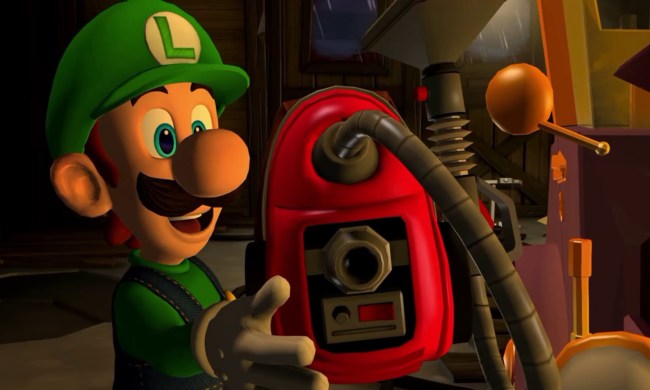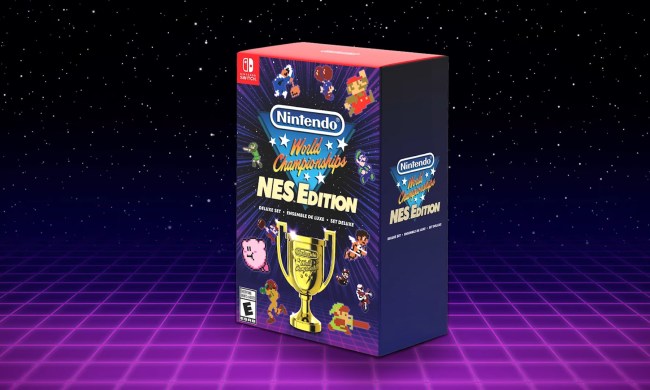Nintendo sequels don’t often require you to play the games that came before it. A player can hop into Paper Mario: The Origami King without ever playing another Mario title. Maybe they’ll miss some in-jokes or fan service references, but history is largely unimportant.
That’s not the case with Metroid Dread. Nintendo says that its long-awaited sequel to 2002’s Metroid Fusion is the end of a five-part saga, concluding Samus’ battle against the Metroids. While anyone will be able to hop right in and appreciate its satisfying exploration, refined movement mechanics, and wonderfully stylized visuals, a little history lesson will go a long way toward appreciating the full scope of the experience.
I played the opening 90 minutes of Metroid Dread and found myself thrilled by its commitment to lore. It’s encouraging to see a Nintendo franchise celebrate its storied history by doubling down on narrative, rather than hitting the reset button.
Parasite X is back
Those who haven’t played previous Metroid games won’t be totally lost when they fire up Dread. It opens with a long, cinematic introduction that covers some of the most important plot beats of the previous 2D games (Metroid Prime is a separate series, so knowledge of Samus’ Phazon days isn’t required here). We get a reminder of what the brain-sucking Metroid creatures are and that Samus has totally eradicated them in previous games. More importantly, we learn that an X Parasite, assumed dead at the end of Metroid Fusion, has been spotted on Planet ZDR.

If you haven’t played previous Metroid games, that might sound like standard sci-fi mumbo jumbo. But for longtime fans, there’s a lot to unpack here. The death of the Metroid species instantly calls back to the tragic tale of the Game Boy’s Metroid 2: Return of Samus, in which players kill every last creature on a planet before becoming mother to a lone baby. To a newcomer, a Metroid is just a random enemy. To a fan, it’s the sad figurehead of a complicated space opera.
The mention of the X Parasites becomes much scarier if you’ve played Metroid Fusion. In that game, the parasite forms into a dead-eyed Samus doppelganger, known as SA-X, that stalks her throughout the game. It’s a terrifying sight, setting the stage for a more horror-focused Metroid game. That’s exactly what I saw in my time with the demo, to varying degrees of success. The main narrative hook is that Samus heads out to recover a set of robots called E.M.M.I. that were sent to ZDR to retrieve the rogue X Parasite. Instead, they went missing. Samus soon discovers that the machines have gone bad and are stalking her, just as her doppelganger did in Fusion. That should send chills down your spine if you remember Fusion.
E.M.M.I. sequences can get very tense. Each of the seven robots patrol a specific zone on the map. When Samus enters an E.M.M.I. door, they start slinking around the 2D platforms trying to sniff her out. Sometimes, I was able to avoid them entirely, running through a set of rooms in a minute flat. When they did actually spot me, I went into panic mode, trying to scramble around platforms as fast as I could. When I eventually pick up the omega beam, a special weapon that’s strong enough to kill one robot, the tension doesn’t stop. I aim it at an approaching E.M.M.I., but it’s taking too long to charge up. I ditch the plan and shoot the door behind me to make a quick escape, but sparks fly out of it as it takes an extra second to open.

I don’t know for sure why the E.M.M.I. want me dead. Is it because they’re possessed by the evil parasites or do they sense the Metroid DNA in Samus’ system, which was used to fight her X Parasite infection in Fusion? That’s the kind of mystery that becomes more impactful because I’m able to draw on four games’ (more if you count remakes) worth of story.
Chozo lore
There are more moments like that as I work through the game’s opening hour. While the E.M.M.I. are at the forefront of the game’s marketing, there’s a more central villain. When she gets to ZDR, Samus is ambushed by a warrior, who destroys her suit in classic fashion. It’s not some faceless bad guy, though; it’s a Chozo. For the uninitiated, the Chozo are a peaceful race of bird people who raised Samus. They’re the closest thing she has to family, which makes the betrayal cut deep.
Other references are more subtle. In an early boss fight, I fight a brain-like creature that seems to have some sort of link to the E.M.M.I. As I shoot missiles at it, I have to dodge red rings and thin laser shots from a mounted turret. It’s a standard attack pattern, unless you’re familiar with the climactic Mother Brain fight in the original Metroid. What would be a throwaway boss suddenly becomes significant. Is this just a spot of fan service or is this creature connected to my first mission? The idea that the game might be reaching that far back feels like a reward for someone who spent the last 19 years revisiting the series’ lore and wishing it would make a return.

Video game sequels are usually careful not to alienate new players. The consequences of previous games tend to magically wipe away before a sequel. Games like The Last of Us Part 2 have stood in defiance of that idea, but Nintendo generally removes as many narrative barriers of entry as possible with a new game. You won’t need a primer on Kirby before playing one of his games, despite the fact that the series has some deceptively deep lore. Even the Zelda series works around the need for history by awakening a different version of Link in most titles. To compare games to TV, it’s like using a “monster of the week” format.
Instead, Metroid Dread is an episode of a serialized drama — and it’s better for it. The stakes feel higher than they would if Samus was investigating some entirely new threat with no connection to her past. After my short time with it, I’m left combing previous games for more details that I may have missed, hoping to further crack the mystery before I dive back in.
You don’t need to play previous Metroid games to enjoy Metroid Dread, but you really should.
Metroid Dread launches on October 8 for the Nintendo Switch. It releases the same day as the new Switch OLED model.



